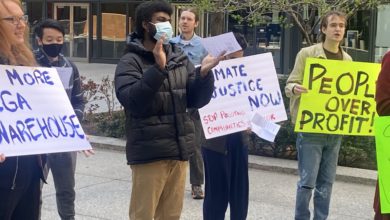Since 1987 people in Nevada have been fighting to keep spent nuclear fuel out of their state. In 2012, due to popular resistance, then-President Barack Obama defunded the Yucca Mountain Nuclear Waste Repository plans. However, the Trump administration is relaunching the proposed project with the White House’s 2018 Budget, which includes a $120-million-dollar starter for nuclear waste programs.
When the Yucca Mountain Nuclear Waste Repository was designed in the 1980s the legal storage limit was 70,000 tons of waste. Today, as of May 2017, there are some 79,000 tons of radioactive material stored at 121 sites across the country in reserve to be disposed of with a further 2,000 tons of nuclear waste produced every year by the 99 operating reactors in the United States. Yucca Mountain is the only proposed site to dispose of this nuclear waste.
This isn’t just a partisan argument about where to dump nuclear waste. What both Democrats and Republicans fail to see is the need for rapid action towards clean and renewable energy.
No alternative plans for nuclear disposal
With poor planning and politics at the helm, the Yucca Mountain Waste Repository plans exemplify the capitalist system’s inability to plan anything in a sustainable way.
Residents living near Yucca Mountain, which is less than 100 miles from densely-populated Las Vegas, have fought hard to keep nuclear waste out of their state, because of an understanding of the dangers that storing nuclear waste possess for their communities.
Uranium rods used in commercial power plants are spent after six years. After that, the uranium pellets are placed in sealed canisters and shipped to repositories like the proposed Yucca Mountain site where they’ll spend the next 10,000 to one million years decaying, poisoning the area they inhabit.
Burden of nuclear waste disposal placed on the poorest
While Nevada residents have been able to fight storing nuclear waste in their home state, people in New Mexico, one of the poorest states in the country with a median income of less than $46,000 a year, have not been able to do the same.
In fact, the New Mexico Waste Isolation Pilot Plant is the only long term waste disposal plant in existence.
In February 2014, at the Waste Isolation Pilot Plant storage facility near Carlsbad, New Mexico, a drum containing radioactive waste blew up. The explosion exposed at least 21 workers to radiation from plutonium and americium.
It was discovered after the explosion that a waste container filled with kitty litter used to absorb liquid material had exploded, (much like canned croissant dough) irradiating 35 percent of the underground facility.
The cleanup of the New Mexico facility ranks among the costliest nuclear accidents in U.S. history at an initial cost of $640 million because of the “unforeseen” reaction of kitty litter and liquid nuclear waste.
One has to ask what other unforeseen horrors await as workers in breathing respirators descend to the labyrinth of tunnels under the New Mexican desert.
Despite the obvious lack of a way to safely dispose of the waste being produced, nuclear reactors and uranium/plutonium enrichment spits out more deadly waste every day.
Socialism as an alternative
Under a revolutionary socialist government, the ability to transition to renewable energy production would not be restrained by the privateers of monopoly and privately owned power plants who dictate energy production. Without the profit-motivated pirates, a socialist government would be free to plan energy production accordingly to protect the earth and meet the needs/rights of the people.
Technologies for safe and renewable energy already exist, but capitalism has betrayed the earth by keeping these technologies from being implemented in a broad way. It is clear for this earth to live, capitalism must die.






